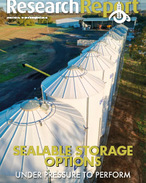This article is 8 years old. Images might not display.
Much of 2016’s success was underpinned by favourable seasonal conditions and high livestock prices, and ABARES predicted the gross value of agricultural production will exceed $60 billion in 2016, about 16% higher than the average figure for the preceding five years.
Writing in the institute’s Ag Forum, Keogh said given the large jump in the annual value of agricultural output from 2015 to 2016, it was “fair to assume” that 2017 would not carry the same success.
“The last time such a big jump in the annual value of agricultural output occurred was in 2001-02, a period that also involved that rare combination of good seasonal conditions and high commodity price,” Keogh said.
“However, the onset of the millennium drought in 2003 meant that it was a further seven years before the gross value of agricultural output exceeded the level achieved in 2001-02.”
Aside from production forecasts, Keogh said the most topical issue in 2017 would be the advent of digital agriculture, and how it impacts production and efficiency.
“Digitisation of the sector is occurring at a very rapid rate as the cost of technology plummets, computing power grows exponentially, and the cost of agricultural data storage, analysis and transmission shrinks,” Keogh said.
“The potential to capture objective data at multiple points along supply chains that extend from ‘paddock to plate’ is creating multiple new opportunities to boost productivity and competitiveness by all participants.
“However, the lessons emerging from the USA are that attempts by post-farm supply chain participants to capture this data and limit farmers’ access to it will severely constrain innovation, to the detriment of the entire sector.”
But the major stumbling block for digital agriculture is telecommunication access, which continues to be a major issue for farmers.
Keogh said many of the potential gains from digital agriculture were not available without good internet connectivity, something which is lacking for many agricultural businesses, even those located close to major regional centres.
“Contrary to all the glossy advertising claims by telecommunications providers, much of rural Australia has poorer telecommunications access than is the case in developing nations in Asia and Africa, as returning Australian travellers readily attest,” Keogh said.
“The much-vaunted National Broadband Network is also proving to be a major disappointment, with severe data restrictions and poor reliability.
“Getting data availability and telecommunications access right will be a major challenge if the benefits of digital agriculture are to be realised in Australia, and 2017 is shaping up as a critical year for both these issues.”























